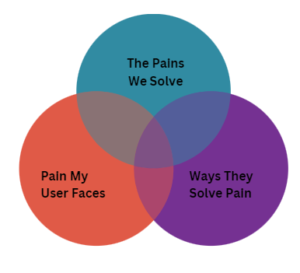Early on in Ideosphere, an advisor told me ‘if you can’t explain to me your business in two sentences, then you do not know your business’ I arrogantly brushed it off then. I agree our pitch was complex, but it worked. So what’s his problem, I thought.
And, then you grow wiser or learn by fire. I grew wiser, after the fire. I realised that people find it difficult to talk about the brand if the pitch is complicated. A complicated pitch also hinders your happy customers from bringing more customers to your door.
Getting your audiences to talk about you, remember you, recommend you, celebrate you, and love you is one of the outcomes of great branding. But, how will they ever talk about you if all of them are still trying to figure out what to do? Today the market has become even more cluttered, complex and nonlinear, making the need to be simple the reason you will win your market.
But, creating a simple front end of your communication, requires a complex back end. You need to deep dive into the way your audiences think and what they really care about? Understand what is the pain you solve? How important is the pain? What are the choices they have if not you? Having the pulse of your customer is a tedious, and often, chaotic process, but once you get it, you will reach a higher level of clarity. And with clarity, your messaging will be simple, intentional, relevant and purposeful.You must consider three main elements in defining this simplicity in your message framework. It lies in the centre. Consider the brand to be your customer, and study it as if you are understanding it for the first time. Then, study your ‘customer’s customer’. These are otherwise known as the end users of the product, and then study your ‘customer’s customer’s choices’.
It is important to note that your customer’s customer’s choices are different from only your competition set. It is all the ways the end user can solve their problems instead of coming to you. You will find this often goes way beyond our traditional competitive sets. The first step is to find and define overlaps in each of the elements. Between the brand and the user define the key pain you are solving, and ensure the pain you are solving is a pain the customer wants to solve. You will be able to define the journey of the user in selecting how to solve their pain as an overlap between the user and their choices. And, between the brand and the users’ choices help define all the ways they solve their problems without you. The definition of how they solve their pain with you is your right to win.
The 3 key elements start looking different. They are now focused on the pain your brand solves, the pain your users have and all the ways they solve it. The overlap of these three will create the simplest messaging you can create.
Message I: The pain I solve
Message II: The type of user personas that have this problem
Message III: The way I solve it better than everyone else

A great example of how to win the market with simple messaging is Airbnb. Book rooms with locals, rather than hotels. That’s it. It talks about a solution and why it is better than hotels, but what is the pain of the user they solve? It was missing. And then, they brought in with ‘belong anywhere’. Not being able to feel like they belong was the pain they solved. And they solved this better than anyone else. Here is what their Brian Chesky had to say about their messaging shift:
“It turns out the answer was right in front of us. For so long, people thought Airbnb was about renting houses. But really, we’re about home. You see, a house is just a space, but a home is where you belong…And what makes this global community so special is that for the very first time, you can belong anywhere.”
This simplicity not only helped them build a strong, differentiated brand with a simple, intentional message, but also, build a strong, significantly profitable (something you do not hear with heavily funded companies) business!
Change the way you look at your messaging from the solution you provide to the pain you solve. This change in perspective will not only simplify messaging, but make it relevant and easy to understand for the user who is paying the cost of not being able to solve the problem every day.
Aniruddha Atul Bhagwat, Ideosphere.










